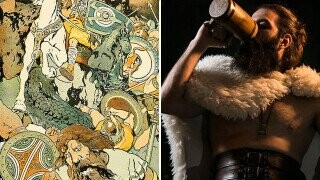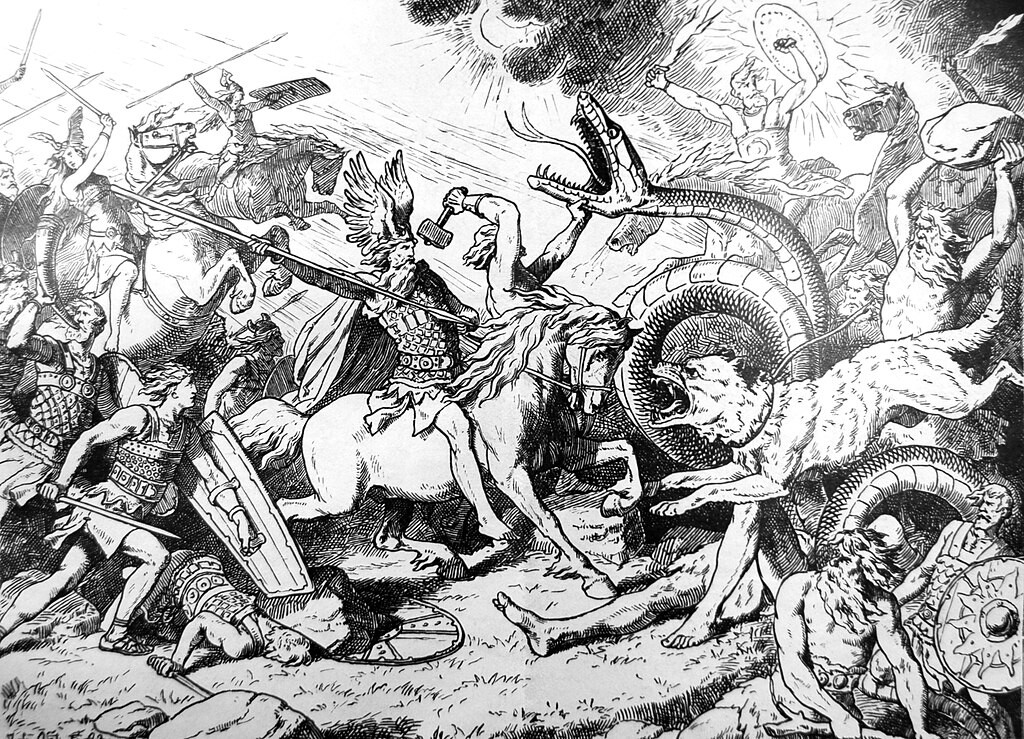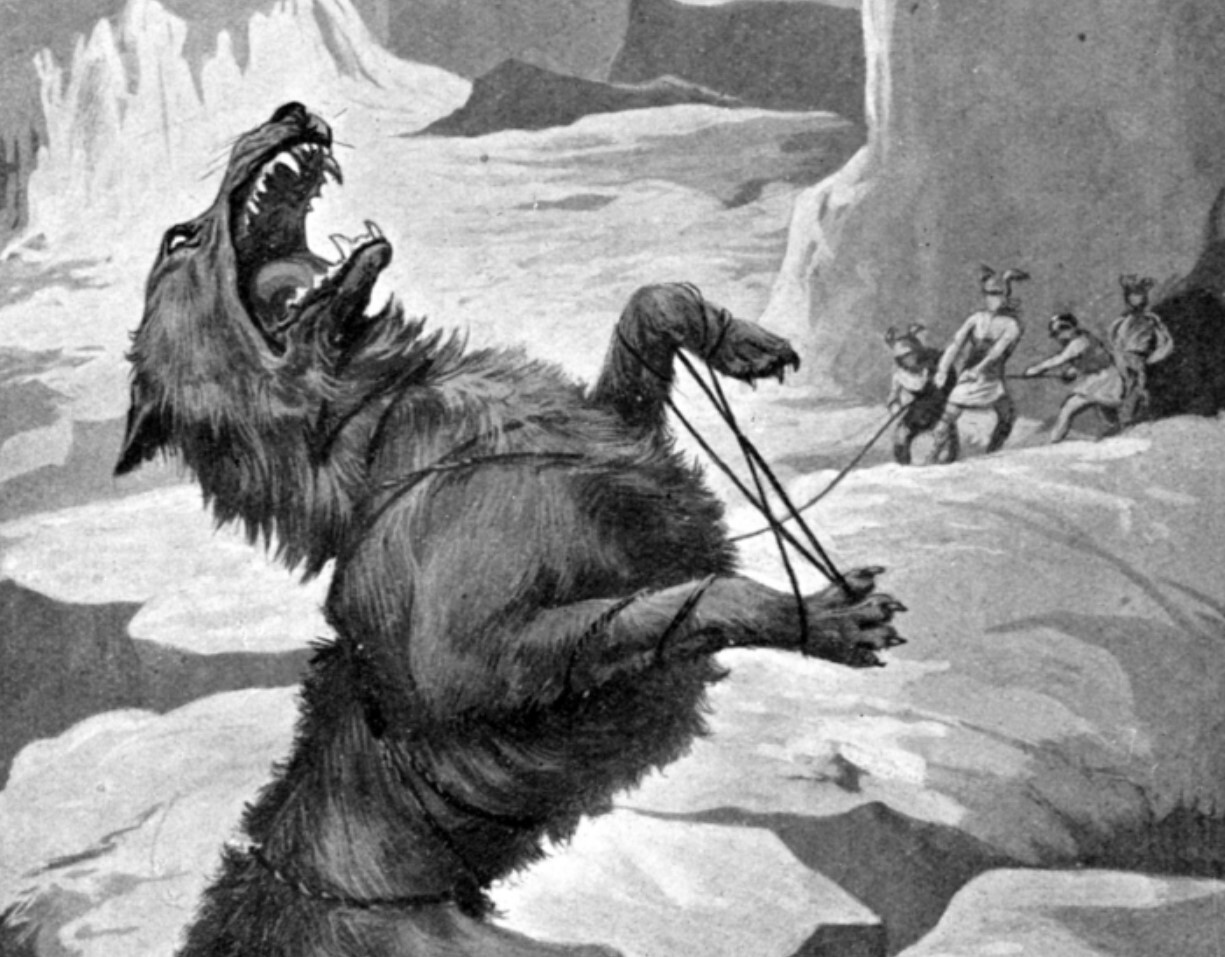An Abridged Look At The Epic Apocalypse Of Ragnarok

Religious beliefs and tales of gods and judgment have been heavily pushed aside in modern times as the scientific knowledge of the population has grown. It’s pretty natural, of course, now that we know how weather works, that we don’t spend every thunderstorm begging an imaginary buff man for forgiveness, or that we don’t run out looking for a big fat lamb to bleed out every time a drought crops up. It’s a net positive for society that has resulted in a whole lot more effective medical treatments and a whole lot less people getting burned at the stake as soon as anything mildly weird starts happening. One downside, though, now that we’ve got a better grasp on why most things happen, is that the world has become a whole lot more boring, or at the very least, less mysterious.
Maybe that’s why mythology remains so fascinating to people like me. In terms of accuracy, the ancient prophets are batting a pretty consistent zero point zero, but god damn do they have a great imagination. Some of my favorite mythology comes from the Norsemen, in a world they painted where all the forces of earth and sky loved to drink heavily and constantly beat the absolute snot out of each other. Not to mention their menagerie of equally cool animals like eight-legged horses and all-seeing ravens. Now, regardless of religion or origin, if you want to jump straight to a group of people's number one coolest story, you’re going to want to fast-forward right to their version of end of days. Norse mythology doesn’t fail here, describing the end of the earth as we know it in a series of catastrophic events and no-holds-barred god-on-god battles known as Ragnarök. In case you're not familiar with the extremely awesome particulars, I'm here to give an overview of the best parts.

We take ragnarök from the combination of ragna, meaning the collective gods, and rök taken to mean doom or destruction. This gives us the meaning of Ragnarök to be “the doom of the gods,” and we are already off to an extremely bad-ass start. We hear all about this in a collection of ancient Norse poetry from the years of 800-1100 A.D. known as the Poetic Edda, specifically in a poem known as the Völuspá that covers the beginning and end of the world. This is also the name of an overpriced candle company from California, which seems a little overconfident. You’re making beeswax that smells like cinnamon, maybe chill a bit on the comparisons to the creation and end of all life.
Don't Miss
But I digress. Back to the apocalypse. It will begin, first, with a fate familiar to any readers of George R. R. Martin’s A Song Of Ice And Fire series, or anyone that suffered through the god-awful conclusion of its HBO counterpart in Game of Thrones, that of a long, harsh winter. The Edda says specifically it will be a winter that lasts 3 full years, so superstitious ancient Norse would probably be highly relieved to hear about global warming. This time is known as fimbulvetr or fimbulwinter, and though definitely not pleasant, is only the beginning of the world’s problems. Next up is a massively devastating W for Skoll and Hati, the two wolves who have spent all of existence trying to gulp down the sun and moon. They’ll finally get their maws around their celestial snacks, at the cost of plunging the entire world into darkness.

Next up, the world is at the mercy of another two extremely ill-behaved mythical animals. Once this winter begins, the wolf Fenrir and the great sea serpent Jörmungandr are about to do to the entire world what two french bulldogs with indigestion could do to their owner's ill-advised pure white sofa. Jörmungandr wakes up and starts thrashing about in the sea, which is a big problem because he is a really, really, REALLY big snake. You see, jörmungandr means “earth necklace” in Old Norse, and it’s his name because he was supposed to be big enough to wrap himself around the entire earth like a giant deadly dookie chain. Celebrity jewelers take note, because I’d love to see Gucci Mane rocking a jormungandr chain sooner than later. Back in the environment of this apocalypse, though, this massive serpent’s rub-a-dub tub time has now flooded the entire earth, except for a ship named Naflgar, captained by his father, Loki. Kind of like a Noah’s ark deal, if instead of animals, it was filled with dead men and giants, and if it was made out of corpses’ fingernails.

If you got confused in the last paragraph by the fact that the serpent is apparently Loki’s kid, it’s not going to get any clearer. The wolf Fenrir is ALSO Loki’s child. The guy has an absolute nightmare of a Punnett square going on where his loins do nothing but spit out massive monsters that will be directly responsible for the apocalypse. Fenrir, bound with a magical, extra-strength ribbon for ages, will break free from his imprisonment and immediately do a great job showing why the gods tied him up, by devouring everything between ground and sky and eventually swallowing the head honcho himself, Odin.

Seeing that, unfortunately, Ragnarök is truly upon them, the god and watchman Heimdall will pick up the gjallarhorn and with it, issue the darkest honk in all existence, signaling to the gods that the end is nigh. From there, as you’d expect from any good Viking tale (though this story predates the Vikings), the Gods take to the battlefield, and pretty much everybody who’s anybody in the realms of the divine starts going absolutely buckwild on each other. Some notable moments in the godly killfeed are Fenrir killing Odin, only to be ripped apart at the jaws by his son Vidarr, and Thor finally killing the great world-serpent via a well-targeted head-crushing hammer strike, only to die immediately afterwards to his poison in a sort of mythical double-K.O. At the conclusion of the battle, the fire-giant Surtr flips the metaphorical Monopoly board they’re losing on and sets fire to the entire world.
Here, with the earth well and truly charred like a forgotten thanksgiving pie, two paths emerge in the telling of the tale. One, decidedly more cheery, does a little of setting up humankind for a season 2, with some gods surviving, and two beings, Lif and Lifthrasir, repopulating the world. The controversy comes from the fact that many versions of the story come after Christian influence had infiltrated norse beliefs, and some scholars believe a Christian reaction of “yeesh, a little dark, don’t you think” was responsible for this added epilogue. Therefore, there’s a group that argues that the true telling of Ragnarök ends only with true, all-encompassing darkness. With the way everything’s going, maybe we’ll find out who’s right soon!
Top Image: Public Domain/Pixabay